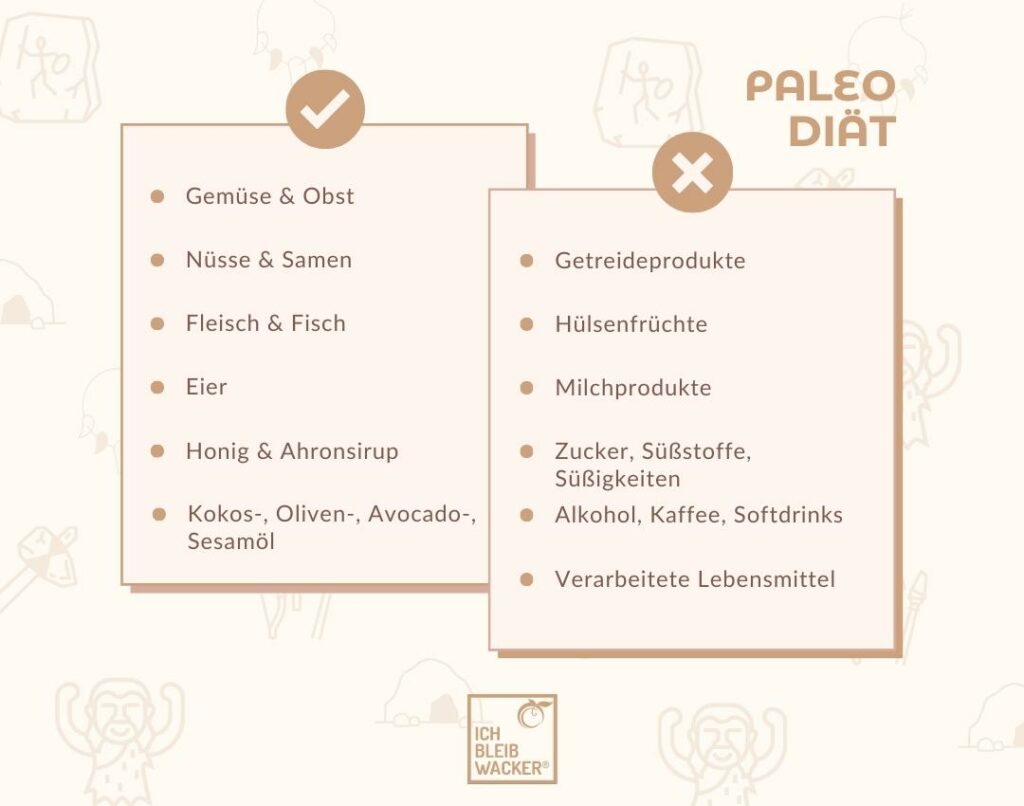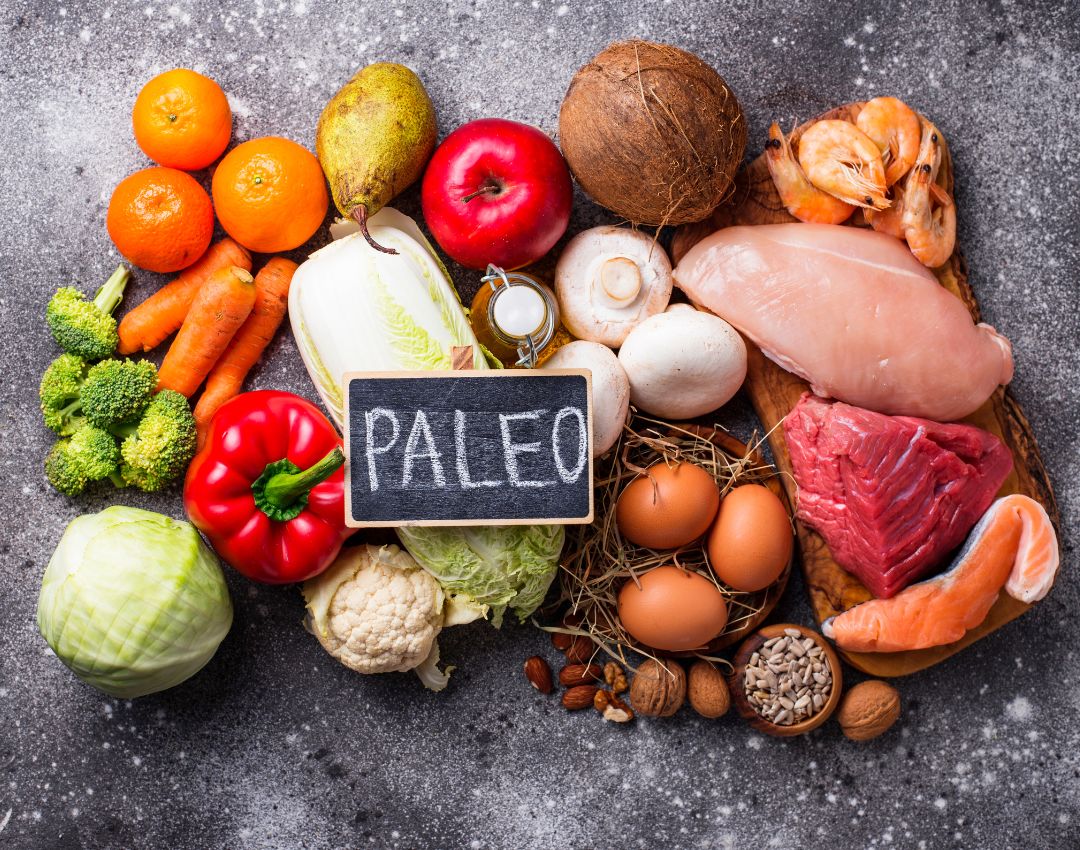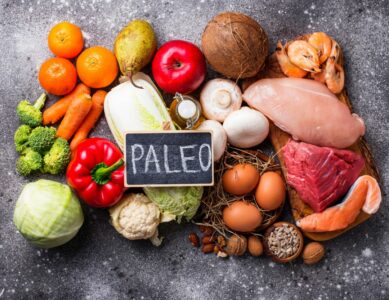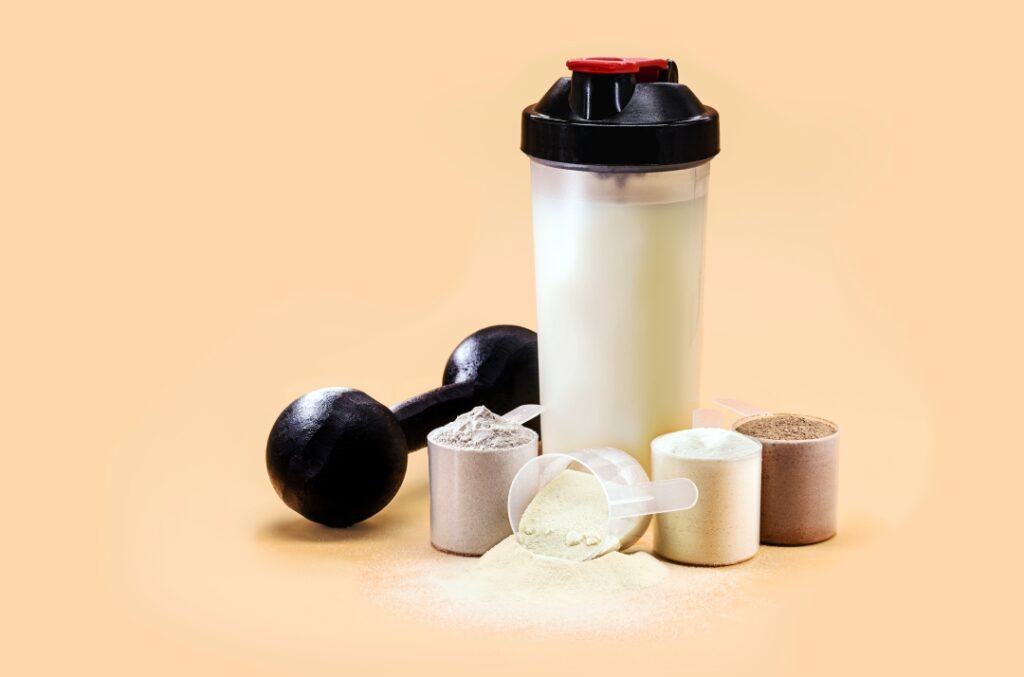After we have Low-Carb-, which High-Protein- and the low-sugar diet Now we come to the next dietary trend: the Paleo diet. The Paleo diet is based on the diet of the Stone Age. All foods are on the menu that were available back then - i.e. could be hunted, gathered, picked or fished. But was everything really better in the past or has the diet of that time long since become obsolete?
Paleo - What is allowed?
The term Paleo is derived from Palaeolithic, which is the technical term for Old Stone Age. This makes it clear what the Paleo diet is all about: All foods that were already available at that time are allowed.

A look at the permitted foods shows that all processed foods are avoided. In addition, grains and legumes are not allowed. The Stone Age diet is therefore suitable for people with gluten intolerance. By the way, you can also find lots of gluten-free products here in the Shop. The biggest energy suppliers in the Paleo diet are animal products. The Paleo diet is therefore not compatible with a vegetarian or vegan diet.
The approximate nutrient composition is 30 percent protein, 40 percent fat and 30 percent carbohydrates. This makes the Paleo diet a low-carbohydrate diet and can be counted as a low carb diet. Athletes can benefit from the high protein values.
Paleo - What are the goals of the diet?
But why should you follow the diet of the past? Followers of the Paleo diet are of the opinion that the diet of that time must still have the best effect on the body today due to evolutionary reasons. The aim of the diet is to increase physical and mental performance, physical well-being and the prevention of diseases. But is the human body today really still programmed for the diet of yesteryear and can the goals mentioned really be achieved with the Paleo diet?
What can the Paleo diet do?
Avoiding processed foods eliminates additives, fast food and sweets from the diet, among other things. This can have a positive effect on health and reduce the risk of diet-related diseases. According to studies, the Paleo diet can have a favourable effect on blood sugar levels and fat mass in type 2 diabetes. In addition, the diet is said to be able to prevent obesity, high blood pressure and elevated cholesterol levels.
From a sustainable and also health perspective, the high meat consumption that the Paleo diet entails must be viewed critically. The DGE recommends a daily meat consumption of a maximum of 300 to 600 grams of meat. In addition, one should also keep an eye on the proteins with the high meat consumption, as too much protein can overstrain the kidneys and increase gout attacks. You can find out how much protein is healthy here read again.
Grains and pulses are not included in the Paleo diet. These are important sources of nutrients. Not eating them can lead to a deficiency of certain nutrients.
Conclusion: Is the Paleo diet outdated or should we take a cue from our predecessors when it comes to nutrition?
In the past, people had a different everyday life than today, which is why it is difficult to transfer the diet of that time one-to-one to today. There were no office jobs back then and the daily exercise and thus also the energy requirements were higher. If we orientate ourselves on the diet of the Stone Age, we should perhaps also take an example from the daily routine of that time and incorporate more movement into our everyday life. Moreover, only seasonal food was available, which is also recommendable today from a sustainable point of view.
We can definitely learn something from our predecessors. However, we are critical of the high consumption of animal foods, and in our view, pulses and grains belong in a balanced diet! Those who opt for the Paleo diet should include fruit and vegetables in their diet every day to ensure sufficient vitamins, minerals, fibre and secondary plant compounds. The entire vegetable palette can provide variety on the plate. Nuts should also be included, as they provide healthy vegetable fats and keep you full. If you decide to follow a Paleo diet, you should always consult a doctor before doing so!
Are you looking for natural food? Then take a look at our Shop over! All our foods contain only what really belongs in them and are therefore free of additives, flavour enhancers or preservatives.
Sources: DGE, Barmer, AOK, Apotheken-Umschau




